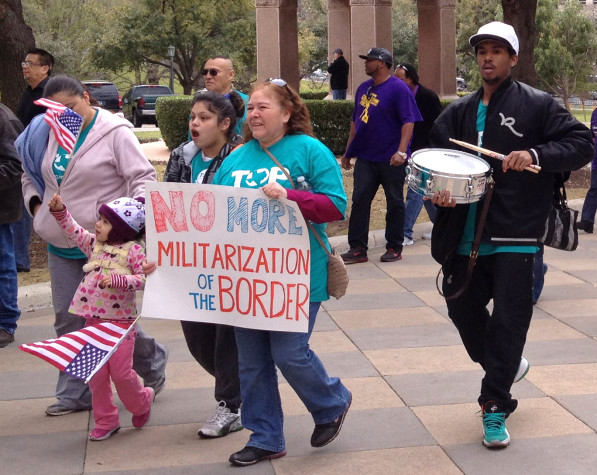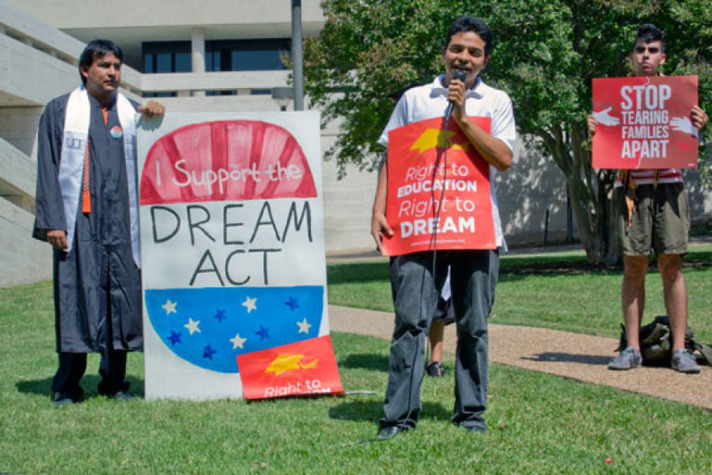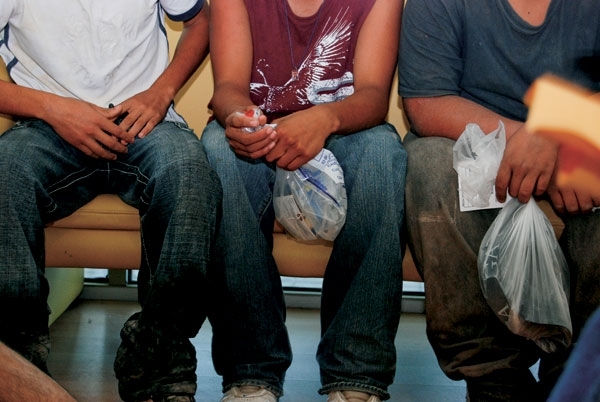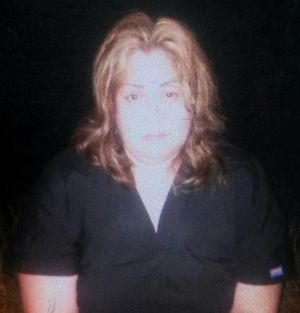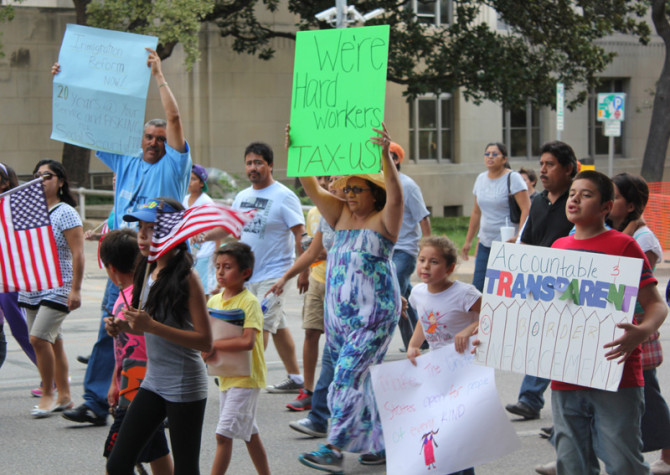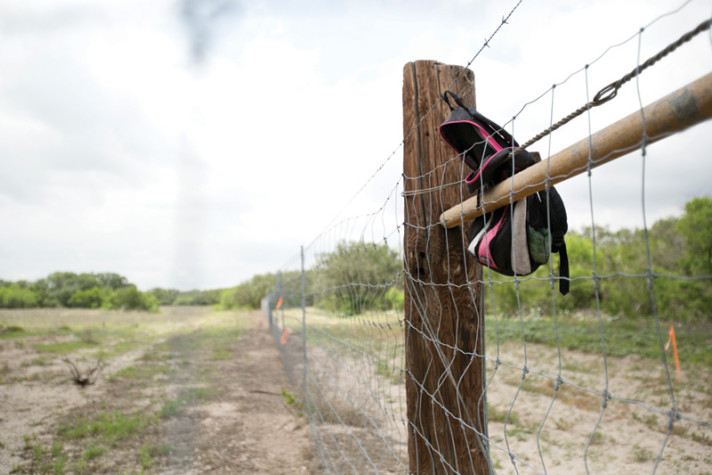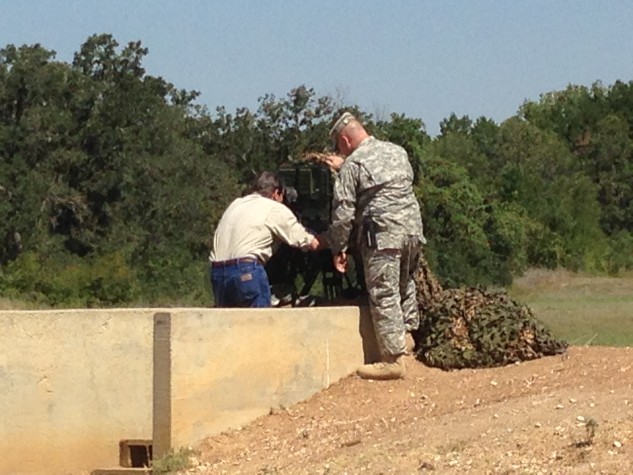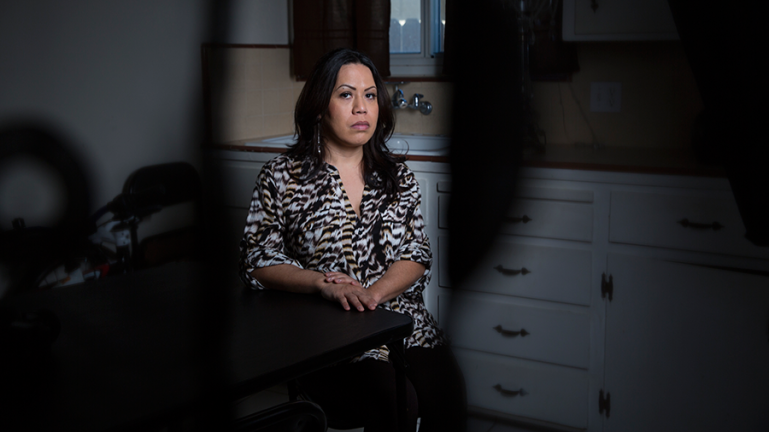
More than two million people have been deported since President Obama took office in 2008. Among this massive number of deportations, an increasing number of people with valid legal claims to remain in the U.S.—even U.S. citizens—are mistakenly deported, according to a report released by the ACLU today. Once returned to their “home” countries, many have suffered catastrophic consequences, including kidnapping and murder. Produced by Sarah Mehta, an ACLU attorney,“American Exile: Rapid Deportations That Bypass the Courtroom” is the first comprehensive study of deportations ordered by immigration agents instead of immigration judges.
Mehta, who was raised in Arlington, Texas, and now lives in New York, spent a year studying deportation cases and found that an astounding 83 percent of people deported in 2013 were removed without a hearing or a chance to see an immigration judge.
Many of the people Mehta interviewed were deported through a process called expedited removal, whereby an immigration enforcement officer can determine someone’s fate in a matter of minutes. In many cases, the officer’s decision can literally mean life or death for the immigrant. For example, Mehta interviewed a transgender woman from Mexico named Nydia R. who was deported under expedited removal despite having obtained political asylum in the United States. Back in Mexico, Nydia R. was raped and tortured by members of Los Zetas and barely escaped with her life. Mehta also documented other cases of people wrongfully deported who were kidnapped, tortured or even killed after being returned to their home countries. The Observer spoke with Mehta about the ACLU’s new report and how our immigration system, which Mehta calls “deeply corrupted,” has largely become a vehicle for mass deportations without legal due process.
Observer: Why did the ACLU decide to spend a year studying deportation numbers?
Mehta: Overwhelmingly, most people now are not going through immigration court and they’re not getting hearings. The bulk of our work to date had been making those hearings fair but increasingly it’s rare for someone to go to immigration court at all. There has been such a dearth of information about who is being deported that we wanted to do a real investigation into who actually is getting deported. When expedited removal was first introduced in 1996 and then expanded in 2005 there was a lot of concern even from congressional representatives that the wrong people—meaning people who had claims and rights—would be swept up and deported. In view of the very cursory nature of expedited removal it’s not really a surprise that mistakes are made nonetheless. We didn’t have any information as to how often it happens, what it looks like and to what extent people who have verifiable claims are still being deported.
Observer: Can you explain what expedited removal is?
Mehta: Expedited removal is where someone is ordered deported not by a judge, not by a lawyer, but by an immigration enforcement officer. It applies predominantly at the border and it allows the officer to order someone deported for five years, 10 years or even for life. It has the same consequences as a deportation order by a judge but without a hearing with evidence and rights to a lawyer. You would think a deportation order issued by an enforcement officer who is not a lawyer or an expert in law would be subject to more oversight and review but it actually gets less review. And it’s almost impossible to get a deportation order reviewed or rescinded once an enforcement officer has issued the order.
Observer: So, who exactly is getting deported?
Mehta: The problem is Border Patrol officers who are doing these deportations are not even asking basic questions. Some people said they were only asked their name and nothing more than that. So it’s not surprising that we have very little information about who gets deported because officers themselves aren’t asking any questions before they order someone deported. One group we looked at is asylum seekers—people who come here fleeing violence. This is one group of people that right now U.S. Customs and Border Protection is supposed to be screening for. They are supposed to ask people who are fleeing violence if they are afraid to go back to their country. The people we interviewed said they were never asked this question before they were deported.
We find that even lawful visitors and people who work lawfully in the U.S. from Canada or Mexico or elsewhere are being deported by expedited removal. The immigration officers assume they are not lawfully in the U.S. even when their claims can be verified, or they make assumptions that they are misusing their visas even when it can’t be verified and there’s no opportunity for them to contest it. Again this is without having to provide any evidence or an opportunity for the person to prove it’s not true.
Observer: Geographically, are there certain areas where there are more expedited removals?
Mehta: One thing I found very surprising is the consistent regularity of problems across the southern border. Along the southern border it didn’t matter where you were. There were consistent problems with Border Patrol officers failing to inform people of their rights and giving them forms often in a language that they didn’t know and ordering them deported in a matter of minutes.
Observer: What were some other surprising things you discovered?
Mehta: One thing that surprised me is the people who get deported who have verifiable claims, people who already have rights to stay in the U.S. It’s not surprising that Border Patrol officers will make mistakes about people who have complicated claims because they’re not lawyers and they’re not trained to give people these very complicated legal determinations but, again, people like Nydia who had asylum—these are things that could have been determined before they were deported. Deportation comes with very specific consequences. It’s very hard to put right even honest mistakes, but in many cases it seemed that Border Patrol officers weren’t even taking the time to do a very basic check to verify a person’s status, to give a person time to collect evidence or to call their attorney or call their family to bring the evidence to prove their claims.
Observer: And why do you think this is?
Mehta: I think in part there’s a general assumption along the southern border in particular that people who are apprehended there don’t have rights or claims to be there and that it isn’t worth the time to verify those claims. And part of the problem is that the Department of Homeland Security interprets the border not as a line but as a 100-mile zone so there are people who are living within 100 miles of the border who are treated as if their lives and rights are disposable. Even if law enforcement officers try to do a good job and have the best intentions they often just don’t have the expertise and sometimes the time to verify a person’s claims and ask the necessary questions that would elicit the information that they need.
Observer: And in fact you even found U.S. citizens during the course of your study who had been deported?
Mehta: Yes, and it’s predictable because it’s a deeply corrupted system that is designed to fail people with their rights. Based on the assumption that anyone arrested in the 100-mile border zone isn’t going to have a right. I think there are mistaken assumptions based on a way a person looks, or his language abilities that lead officers to assume that they aren’t citizens and they unfortunately don’t give them the opportunity to prove that before deporting them. Deportation can come with very catastrophic consequence for some people. Some of the individuals in the report were attacked, kidnapped and raped or sometimes all three. One person was murdered after being deported and they had told the officers about the danger before they were deported.
Observer: So how do we fix the system? We always hear about spending more money on border security but are we spending enough on our immigration court system? What about providing attorneys to immigrants who need them?
Mehta: We have deeply underfunded the court system and all of the mechanisms and safeguards that provide justice and protect people’s rights. While there has been an expansion of funding for the militarization of the border there hasn’t been comparable funding going to the courts. The courts are severely overburdened as it is. We hope that with Obama’s executive action that there will be some reprieve on the courts and they will free up to adjudicate people who were left out in the executive action.
There also need to be attorneys and an opportunity for people to read the deportation order in a language they understand before they sign it and an opportunity for them to know about the rights and the consequences of taking a deportation order or accepting voluntary return. Right now border officers have the discretion to refer people for a hearing but it doesn’t appear they are using that discretion because [in 2013] 83 percent of the deportations were from officers and not through the court system. Border Patrol officers should screen for people who might have claims to be in the U.S. and children in particular. These individuals should get a hearing with all of the protections that go with it.
Observer: I often hear from commenters online who say, “Why should we be so concerned about providing legal representation to people who are not U.S. citizens?
Mehta: For one thing we don’t know if they’re citizens or not in some of these cases. There are a lot of people who are U.S. citizens who were not born in the United States and there are people who were arrested and deported who it turned out are U.S. citizens. Verifying their claims sometimes requires legal assistance. This can be a quick and easy thing but other times it can get complicated and does require a lawyer’s assistance. But beyond the people who are U.S. citizens there are a lot of people with strong ties and rooted lives here who are parents or relatives of U.S. citizens, who are a part of our community and their rights matter. It’s important to have lawyers, it’s important to have justice because the entire integrity of the immigration system depends upon it.

